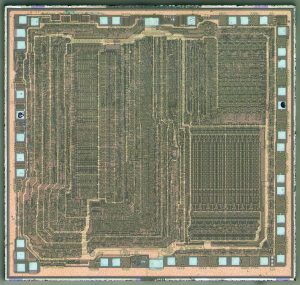Listen to article
As technology marches forward, it often leaves behind relics of the past, revered for their contributions but ultimately replaced by newer, more advanced innovations. Such is the fate of the Zilog Z80 microprocessor, an iconic figure in the realm of computing, which has recently been announced to be discontinued by its manufacturer, Zilog.
The Z80 holds a special place in the annals of computing history. Born out of the ingenuity of Federico Faggin and his team in the mid-1970s, it emerged as Zilog’s flagship product, signaling the company’s entry into the semiconductor market. With its roots tracing back to the Intel 8080, the Z80 was designed to be a compatible extension and enhancement of its predecessor, but it quickly surpassed it in popularity and functionality.
From its official introduction in July 1976, the Z80 found widespread adoption in a myriad of applications. Initially targeted at embedded systems, it soon made its mark in desktop computers, home computers, military equipment, musical instruments, and coin-operated arcade games of the late 1970s and early 1980s, including Pac-Man. Its versatility and robust performance made it a favorite among developers and hobbyists alike, earning it a loyal following across the globe.

By ZeptoBars – https://zeptobars.com/en/read/Zilog-Z80-Z0840004PSC, CC BY 3.0, https://commons.wikimedia.org/w/index.php?curid=33458723
One of the key factors behind the Z80’s success was its binary compatibility with the Intel 8080, ensuring that existing software developed for the latter could seamlessly run on the former. This compatibility facilitated the adoption of the Z80 and allowed for a smooth transition for developers and users alike. However, the Z80 wasn’t merely a clone of its predecessor; it introduced numerous enhancements and features that set it apart and contributed to its widespread acclaim.
The Z80 boasted an enhanced instruction set, featuring more logical and readable mnemonics, flexible data movement instructions, improved addressing modes, and a comprehensive interrupt system. These enhancements, coupled with a built-in DRAM refresh and non-multiplexed buses, simplified system design and reduced the need for additional support hardware, making it an attractive choice for designers and manufacturers.
Over the years, the Z80 continued to evolve, with successive generations introducing improvements in performance, power efficiency, and feature set. From its humble beginnings as an 8-bit microprocessor, it grew into a family of products, including fully pipelined variants with expanded address ranges, catering to the ever-expanding market for embedded systems.
Despite its enduring legacy, the march of progress inevitably catches up with even the most venerable of technologies. In April 2024, Zilog announced the discontinuation of the Z80, marking the end of an era. While the news may evoke nostalgia for some and sadness for others, it also serves as a reminder of the relentless pace of innovation and the need to embrace new technologies as they emerge.
As we bid farewell to the Z80, let us remember it not just as a piece of silicon but as a symbol of innovation, perseverance, and the spirit of exploration that drives technological advancement. Though its physical presence may fade into obscurity, its influence and legacy will endure, inspiring future generations of engineers,, and enthusiasts to push the boundaries of what is possible.
In closing, let us raise a virtual toast to the Z80, a true pioneer in the world of computing, and thank it for the countless memories, innovations, and adventures it has enabled. Farewell, old friend, and may your legacy continue to shine bright in the annals of technological history.
Rewritten by chatGPT, based on the article at Wikipedia…

